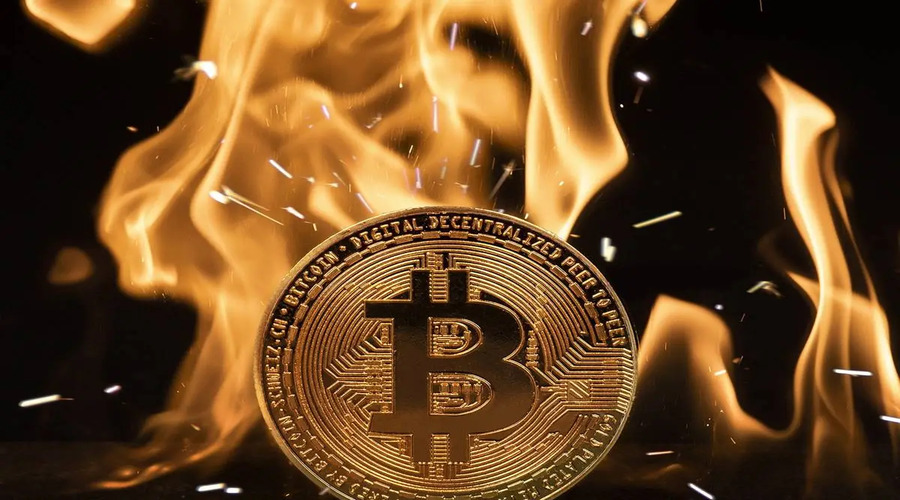

Cryptocurrency has introduced a lot of new concepts to the world of finance, and one of the more interesting concepts is “coin burn”. Coin burn is a process in which cryptocurrency tokens or coins are purposely destroyed, usually by sending them to a public address where they cannot be accessed or retrieved. In this article, we will explore what coin burn is, why coins are burnt, and its impact on the cryptocurrency market.
What is Coin Burn?
Coin burn is a process that involves the permanent removal of a certain number of tokens or coins from the total supply of a cryptocurrency. This means that the coins that are burnt are effectively taken out of circulation and can never be used or traded again. The act of burning coins is usually done by sending them to an address that is not accessible to anyone, such as an address with no private key.
Why Are Coins Burnt?
There are several reasons why cryptocurrency projects may choose to burn their tokens or coins. Here are some of the most common reasons:
To reduce the total supply:
One of the main reasons why cryptocurrency projects choose to burn their tokens or coins is to reduce the total supply. By reducing the supply, the value of each remaining token or coin may increase, making it more valuable to holders. This can be beneficial for the long-term sustainability of the project.
To increase scarcity:
Burning coins can also increase the scarcity of the remaining tokens or coins. When the supply of a particular cryptocurrency is reduced, the remaining tokens or coins become more scarce, making them more desirable to potential investors or users.
To reward token holders:
In some cases, cryptocurrency projects may choose to burn their tokens or coins as a way to reward token holders. This can be done by distributing a portion of the burnt tokens to existing token holders in proportion to their holdings.
To comply with regulations:
Burning tokens or coins can also be a way for cryptocurrency projects to comply with regulations in certain jurisdictions. Some regulators may view the burning of tokens as a way to reduce the likelihood of market manipulation or insider trading.
To improve network performance:
In some cases, burning tokens or coins can improve the performance of a cryptocurrency network. By reducing the number of tokens or coins in circulation, the network can process transactions more quickly and efficiently.
Impact of Coin Burn on the Cryptocurrency Market
The impact of coin burn on the cryptocurrency market can vary depending on the specific circumstances of each case. Here are some of the potential effects:
Price increase:
If a cryptocurrency project burns a significant number of its tokens or coins, the reduced supply can lead to an increase in the value of each remaining token or coin. This can be beneficial for existing token holders and may attract new investors.
Improved network performance:
If the coin burn results in an improved network performance, this can be beneficial for the long-term viability of the cryptocurrency project. A more efficient network can attract more users and investors.
Reduced liquidity:
Coin burn can also reduce the liquidity of a cryptocurrency, as the number of tokens or coins available for trading is reduced. This can make it more difficult for investors to buy or sell the cryptocurrency, and may lead to increased volatility in the market.
Regulatory compliance:
Burning tokens or coins can help cryptocurrency projects comply with regulations in certain jurisdictions, which can improve the reputation of the project and attract more investors.
Factors to Consider with Coin Burn
Before investing in a cryptocurrency that has a coin burn mechanism, there are several factors that investors should consider:
Tokenomics:
The tokenomics of the cryptocurrency project should be considered before investing. This includes the total supply of tokens, the rate of token issuance, and the distribution of tokens. Understanding the tokenomics can help investors determine the potential impact of coin burn on the value of the tokens.
Roadmap:
It’s important to look at the roadmap of the cryptocurrency project and understand why they are implementing coin burn. If the project is burning coins to increase the scarcity of the tokens or to reward token holders, this could be seen as a positive sign. However, if the project is burning coins to cover up poor financial management or to manipulate the market, this could be a red flag.
Community support:
The support of the community is essential for the success of any cryptocurrency project. Investors should look at the community support for the project and assess the sentiment around the coin burn mechanism. A strong community that supports the coin burn can indicate a positive future for the project.
Reputation:
Investors should also consider the reputation of the cryptocurrency project and the team behind it. A project with a strong reputation and a team with a track record of success is more likely to succeed in the long term.
Risks:
As with any investment, there are risks involved with investing in a cryptocurrency that uses coin burn. Investors should be aware of the risks and do their own research before investing any funds.
Examples of Coin Burn in Cryptocurrency
Many popular cryptocurrencies have implemented coin burn mechanisms. Here are a few examples:
Binance Coin (BNB):
Binance Coin is the native cryptocurrency of the Binance exchange. The cryptocurrency has a total supply of 200 million, with 100 million currently in circulation. Binance burns a portion of its tokens every quarter, with the goal of burning 50% of the total supply over time. The burning process is based on the trading volume on the Binance exchange.
TRON (TRX):
TRON is a decentralized platform that aims to create a global entertainment network. The platform has a total supply of 100 billion TRX tokens. TRON burns a portion of its tokens every quarter, with the goal of reducing the total supply to 99 billion.
Ripple (XRP):
Ripple is a payment protocol and digital currency that aims to facilitate fast and low-cost international money transfers. Ripple has a total supply of 100 billion XRP tokens, with 45 billion currently in circulation. Ripple periodically locks up portions of its tokens in escrow accounts, which are gradually released over time. Any unused tokens at the end of the escrow period are burned.
Conclusion
Coin burn is a mechanism used by many cryptocurrency projects to reduce the total supply of tokens or coins. The process of burning coins can have a significant impact on the cryptocurrency market, including price increases, improved network performance, reduced liquidity, and regulatory compliance. However, investors should do their own research and consider factors such as tokenomics, roadmap, community support, reputation, and risks before investing in any cryptocurrency project that uses coin burn.


I have been writing about crypto for over two years. I have a vast amount of experience in the industry and my work has been featured on some of the biggest publications in the space.
